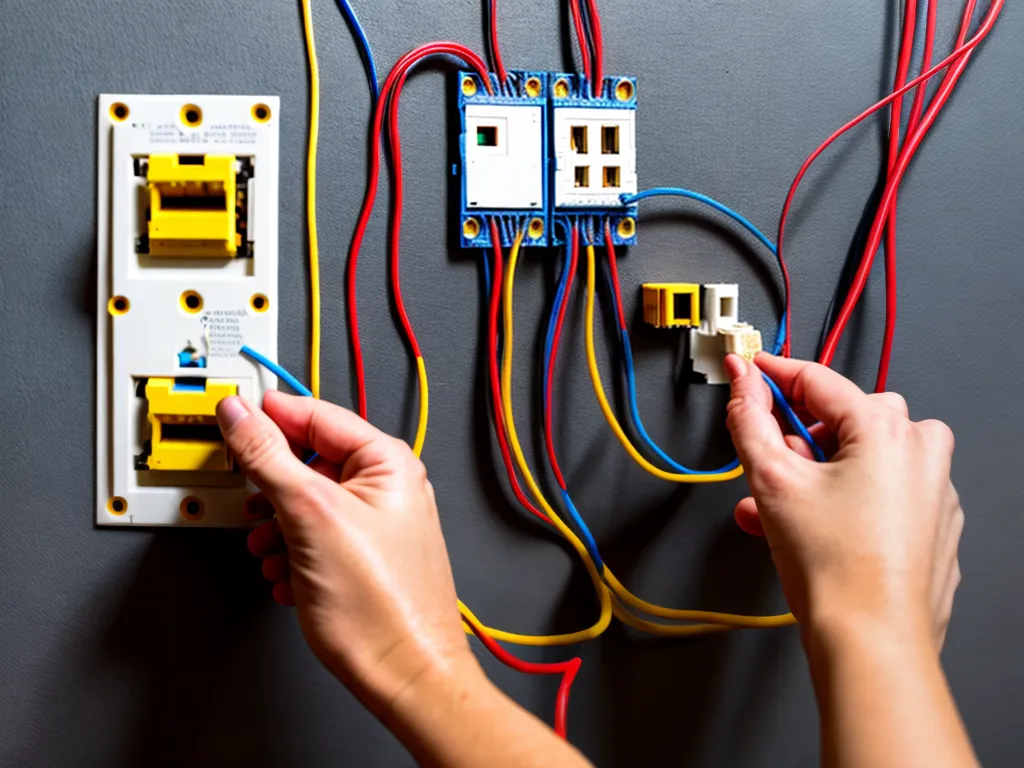
Introduction
Electrical wiring is an essential part of any building, enabling the distribution of electricity to power lights, appliances, and other devices. While modern wiring methods utilize updated materials and safety practices, some obsolete techniques persisted into the early-to-mid 20th century before being phased out in favor of safer approaches.
Understanding obsolete wiring methods can offer insight into older buildings and electrical systems. However, these approaches should not be replicated, as they often violate modern electrical codes and standards. This article will provide an overview of obsolete wiring techniques for educational purposes only.
Knob and Tube Wiring
Knob and tube (K&T) wiring was commonly installed in homes and buildings in the early 1900s. This involved running electrical wires through ceramic tubes and over ceramic knobs attached to structural framing.
Some key facts about knob and tube wiring:
- Used bare copper wiring without insulation
- Wires were separated by air space rather than being bundled together
- Commonly installed before 1930, phased out by 1950s
- Prone to insulation breakdown and fire hazards
- Does not meet modern electrical code requirements
While obsolete, K&T wiring can still be found in some older homes. However, it poses risks and should be inspected and replaced by a qualified electrician.
Cloth-Insulated Wiring
Another obsolete wiring method was cloth-insulated wiring, popular in the 1930s and 1940s. This involved wrapping rubber-treated cloth around copper conductors as makeshift insulation.
Key facts about cloth-insulated wiring:
- Used rather than modern rubber or plastic insulated wiring
- Cloth insulation prone to deterioration over time
- Exposed copper conductors pose shock and fire risks
- Outdated form of insulation that does not meet modern standards
As with knob and tube wiring, cloth-insulated wiring can still exist in older buildings but should be replaced with modern wiring. The insulation breaks down over time, leading to hazards.
Unsafe Wiring Practices
In addition to the obsolete materials used, wiring done prior to modern electrical codes often violated other important safety practices:
- Insufficient wire gauges used that could overheat
- Inadequate circuit protection and fusing
- Combustible materials used as insulation
- Wires secured with flammable materials
- Splices improperly spliced and insulated
These methods increased fire risks and made electrical shocks more likely. They should never be used in new wiring jobs.
Dangers of Obsolete Electrical Wiring
While reviewing outdated wiring methods provides some historical perspective, it is important to emphasize that they should never be replicated. Key dangers include:
- Fire hazards from deteriorated insulation and undersized wires overheating
- Electric shock risks from exposed conductors and ungrounded systems
- Unsafe voltage drops from small wire gauges unsuitable for modern loads
- Lack of polarization and grounding found in modern wiring
Any obsolete or inactive wiring should be inspected by an electrician and replaced if still in use. Rewiring older buildings with modern wiring is the safest option.
Modern Electrical Wiring Safety Standards
Modern wiring methods utilize improved materials and adhere to safety standards like the National Electrical Code (NEC). Key characteristics include:
- Plastic or rubber insulated wires
- Grounded outlets with polarization
- Adequate wire gauges for expected loads
- Overcurrent protection through fuses and circuit breakers
- Wires properly secured and separated
Adhering to the latest safety codes and best practices ensures electrical systems are safe and meet the demands of modern electrical usage in homes and businesses.
Conclusion
Reviewing obsolete electrical wiring methods provides historical insights but also underscores the importance of modern safety standards. While these outdated approaches may still exist in some older buildings, they should be properly inspected and updated to avoid risks. Safety should always be the top priority for any electrical wiring project.